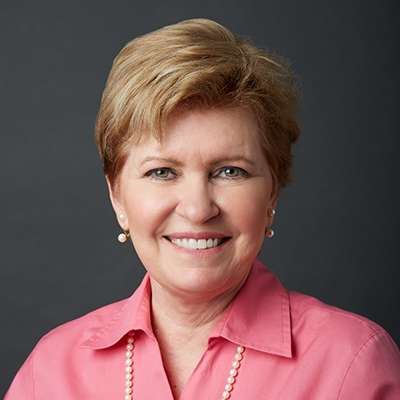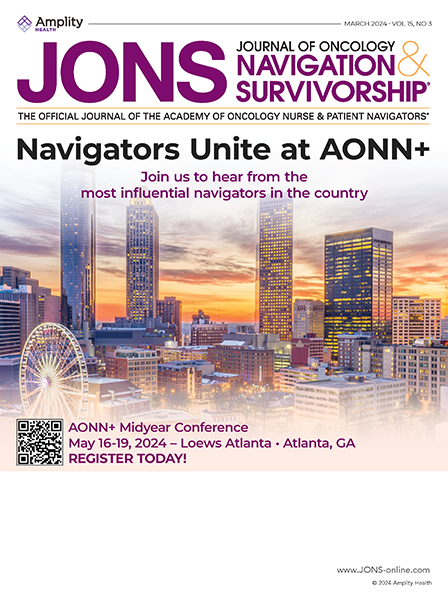When first diagnosed, breast cancer patients are confronted with both the new diagnosis and the complexity of care. Patients may wonder why there are so many decisions and what role each provider and treatment team member play in their treatment plan.1
As a nurse navigator, I am often asked by patients, “Why am I seeing so many doctors?” “What is the medical oncologist going to do that the other doctor can’t do?” “What is the function of these different doctors?” “One doctor told me information that is not the same as the other doctor!”
Patient education is needed to support the treatment continuum and bridge the multidisciplinary team approach while using simple language that is easy for patients and caregivers to understand.
Our navigation team set out to determine the specific content needed to educate the patients and improve their experience. Our feedback came from our support group made up of patients and caregivers. Results showed that patients and caregivers felt they were not getting the information they needed prior to surgery. Patients also reported they often forgot instructions due to the overwhelming nature of the cancer journey.
We asked the breast center biopsy team for feedback that they received from patients via in-person visits or phone calls. The breast center providers helped navigation to understand patients’ feelings on the day of breast surgery, along with their level of understanding about their treatment process.
Finally, we received feedback from the breast radiology team, surgical team, and oncology team. Physician feedback was critical, but additional feedback from office staff, schedulers, and nurses also became vital for a complete understanding of the patient experience. Navigation discovered a lack of written material that could pull together the different disciplines and their objectives for care. In posttreatment, patients commented on the lack of consistent messaging.
Objectives
Our objective was to design a guide and provide information in collaboration with the provider, patient, caregivers, and support staff, in addition to standardizing messaging.
Goal #1- Reduce confusion while providing a tool that streamlines the patient treatment experience in a clear and concise manner. It had to be easy to carry, functional, purse-sized and portable so that it could easily be utilized by patient and caregiver
- Provide comprehensive information needed to support the multidisciplinary team approach and provide A to Z resources that listed a network of support specific to our community and breast program. Specifically, the guide had to be simple to understand and serve to reduce anxiety, not overwhelm
- Length
“Not too long”
“Address important issues, but leave room for individualized and specific treatments”
“Booklet that helps to integrate patient into treatment process” - Design of booklet
“Make sure it’s attractive and user-friendly”
“Size of the booklet to fit into purse”
“Guide cover at a glance doesn’t reveal breast cancer; no pink ribbons”



Our center utilizes multidisciplinary planning through a bimonthly breast cancer conference, which is an essential component to our personalized treatment approach. To ensure continuity of messaging, coordination of the breast program leadership was key for the compilation of information. The breast program leadership consisted of breast radiologists, and medical, radiation, surgical, and reconstruction oncologists. Navigation played a key role in the implementation of teams and sources used. Physician support staff also collaborated on the content, creating both an environment of teamwork and a final product that was well received by the patients. It was gratifying to see the results of patient input, provider input, and staff ideas. We voted on designs and collaborated on content. One unintentional result was that we created a strong collegial working environment between nursing, support staff, and physicians that lent itself well to the multidisciplinary process.
The result was the development of an easy-to-understand, purse-sized booklet that provides the patient and caregiver an organized resource that supports the multidisciplinary approach for breast cancer care. The booklet supports the treatment continuum with standardized treatment messaging while leaving room for individualization.
The breast cancer booklet has since been used as a resource for a comprehensive patient kit when our program joined Sarah Cannon. This patient kit has been standardized and deployed across the Sarah Cannon network.
I want to give thanks to the entire breast program who worked together to develop this booklet, with special acknowledgments to Melissa Eades, RTRM, OPN-CG, and Sara Olson, CHP, who coauthored the abstract and had an integral part in the development of The Breast Cancer Navigator: A Guide to Personalized Breast Care.
Reference
- Bronner MB, Nguyen MH, Smets EMA, et al. Anxiety during cancer diagnosis: examining the influence of monitoring coping style and treatment plan. Psychooncology. 2018;27:661-667.




